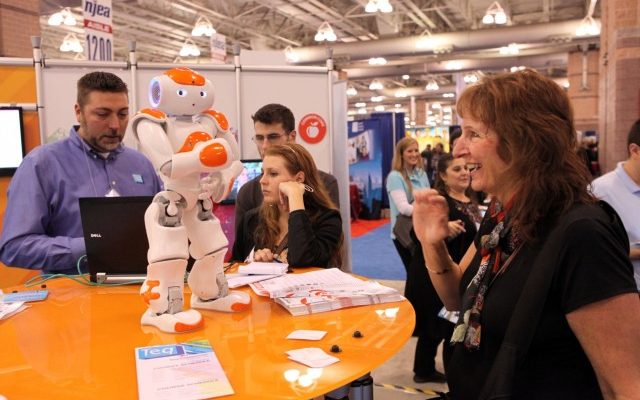Why Makerspaces Are the Key to Innovation

Makerspaces are creative spaces located in communities, schools, and public and academic libraries. These areas are designed to engage participants in hands-on activities that teach twenty-first-century skills. The emphasis in makerspaces is placed upon educating students in STEAM (science, technology, engineering, and mathematics) subjects as well as digital and information literacy.
According to Kylie Peppler and Sophia Bender in their article, Maker movement spreads innovation one project at a time, the focus of makerspaces is hands-on learning, “A hallmark of the maker movement is its do-it-yourself (or do-it-with-others) mindset that brings together individuals around a range of activities, including textile craft, robotics, cooking, wood-crafts, electronics, digital fabrication, mechanical repair, or creation — in short, making nearly anything.” This focus on hands-on creative learning is one of the reasons why makerspaces are seen by educators as being a key to innovation and an ideal method for equipping students to succeed in the future.
In today’s society, the future of the United States and its students is tied closely to STEAM subjects and innovation. The status of the present economy demands advancement in the fields of science and technology, both for the growth of the country and for student success. In order to be successful in this global economy, U.S. students need to catch up with other industrialized nations. The 2015 Programme for International Student Assessment (PISA) report from the Organization for Economic Cooperation and Development (OECD) states that American students are behind many other nations in science, math, and reading.
The U.S. ranks 25th in science and is below the PISA mean score in math, with this score showing a negative trend from the last PISA report in 2012. In reading, the U.S. is only four points above the mean and ranks below many European and Asian countries. Educators will need to take these results into consideration as they look for new ways to engage students and teach STEAM subjects. One of the tools that educators can employ to help bridge this disparity in math and science is the use of makerspaces and hands-on learning techniques. These methods have shown promise for moving students from being typical consumers and brought them towards creative innovation.
In addition to the focus on STEAM subjects, the recent changes in the economy and job market have impacted education. According to a recent Pew research Study, the education and training needs of today’s employees have changed drastically in the last ten years, and many positions require constant learning and adapting to new technologies and methodologies. In this study, The State of American Jobs, researchers found that computer/technology, soft skills, and communication/writing skills were ranked as being integral to success in the job market, with 85% of respondents reporting that these skills were either extremely or vital to success in the market.
The study also compared the skills needed today to those from 1980 and found that overall there has been a 68% increase in the amount of education and training necessary to succeed in the workforce. With the market’s increased demand for talented workers who are skilled in technology and communication, the opportunities that makerspaces generate for learning many of these skills are more important than ever before.
While educators have been working towards new teaching methodologies for STEAM subjects, the impact has not yet been realized in the test scores of U.S. students. The recent findings from the PISA report, in combination with the overall economy and job market, have made it quite clear that the U.S. still has much to do to prepare students to be successful in the market. One of the keys to bridging the gap in student knowledge of STEAM subjects is hands-on and creative learning.
Makerspaces can help address this problem with their focus on creation and social interaction. In Makerspaces students are given opportunities to work with technology, bring ideas to life, interact with peers and educators in new ways, and learn to problem solve, as well as, providing an environment in which they can make mistakes and learn from them. With all of the opportunities for learning that they offer, makerspaces may hold the key to unlocking the potential for innovation in our students and our economy.





